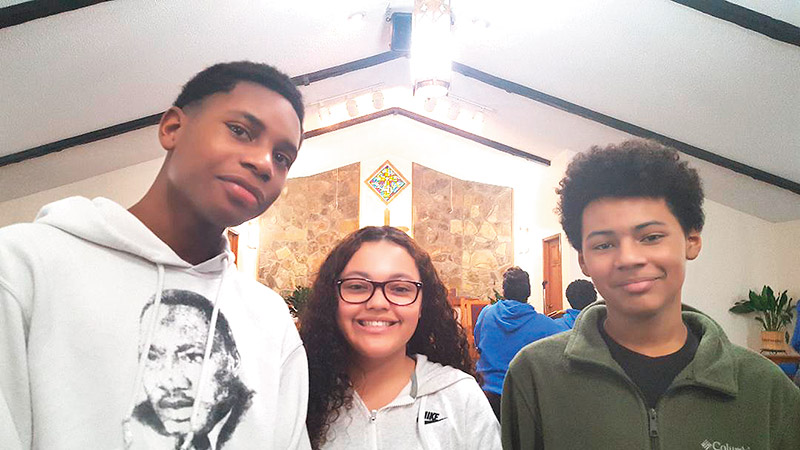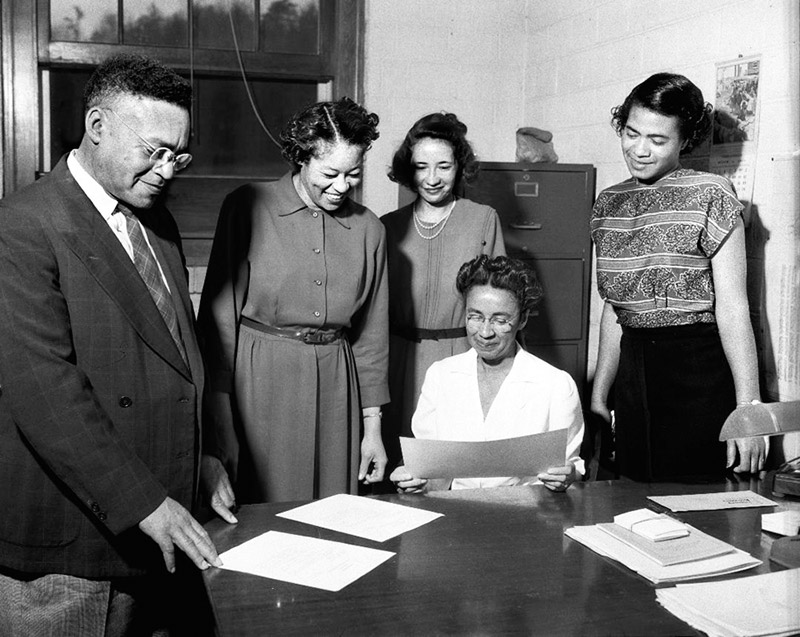Scarboro: Education was the fabric of the community
Although February has been recognized as Black History Month in America, “Black History Month” should be one aspect of the fabric of American History and incorporated in the curriculum as such.
Reviewing past oral histories, discussions with persons, and researching early black education in Oak Ridge, it is interesting to know that many of the early black workers had more than an elementary education.
“Education was the cornerstone of our lives,” said the late Mary Steele.
Those workers were passionate about their purpose and believed work in the secret city would provide for them and their families unlimited possibilities. They worked diligently with the Department of Energy, superintendent of schools, and concerned citizens, hoping a school would afford them equal access.
In “An Adventure in Democratic Administration,” Dr. Alden H. Blankenship writes that the Scarboro School was built to comply by state law that “negroes be educated in separate schools.”
The early years
In Oak Ridge’s early years, the Scarboro School became an elementary school for black pupils only. Arizona Officer, Robert Officer, Ruby Gray, Ann Cato, Vivian Fleming, Mamie Harper, George Walker, and others were recruited by the Superintendent of Schools and Department of Energy. Arizona Officer served as principal for both the elementary school and the High School.
Those black pupils who wanted to go on to junior high and senior high school (beyond eight grades) were transported by bus to Austin High School in Knoxville, then an all-black high school, by authorization of local and state law.
In 1950 high school classes were added to Scarboro School and students were no longer bused to Knoxville. According to an article by Barbara Hart in January 21, 1974, Oak Ridge was the first and only school in 1950 for Black High School students in Anderson County. According to Hart and oral histories by Louise Mills and Mary Ellen Bohanon, and others, this was made possible by Bob Coveyou, Robert Peele and other prominent Oak Ridge citizens with advanced degrees who offered their teaching services. A total of 40 black students were enrolled that September.
Scarboro High School then graduated the first Black high school students in an Anderson County, when it held its commencement in May 1951. Scarboro High School would go on to graduate several others like Mary Steele and Louise Mills, to name a few.
Louise Mills recalled what graduation was like in an interview in 2012: ”Students would dress up in their finest. We wore a red gown and gap and we had dressed clothes and high heel shoes under our gown. There were no holes in our pants sneakers.”
She also recalled Arizona Officer, the principal. “Mrs. Officer would take time out with the students; she was our guidance counselor as were all the teachers.
A personal touch
Both the teachers and Mrs. Officer made visits to our homes, monitored our grades, and took us on special field trips like the one to Tennessee Agricultural and Industrial University in Nashville (now known as Tennessee State University). There we met former Scarboro High School graduates Elizabeth Lewis and Jimmy Ezell, who I think were majoring in biology or some science.”
Mrs. Mills went on to say she remembered the time Mrs. Officer and some of the teachers took the students to see Carmen Jones, a movie that starred Dorothy Dandridge at the location where Big Ed’s Pizza is.
Kelly King, a former graduate of Scarboro High School recalls going to school and wanting to know more. “The teachers went beyond teaching to challenging and preparing us. He recalled other teachers like Fred Brown from Alcoa who had a Ph.D. in Engineering. “I think he and George Walker were the only teachers that were hired by Oak Ridge High School.”
The late Mary Steele was one of the members of the Scarboro girls basketball team. “There was so much fun, when you were playing you forgot everything. We played the negro schools in Knoxville and surrounding areas.”
During the 1950s, like every place, there were separate athletic competitions for blacks and whites.
“The Tennessee Negro Athlete School had referees for all black schools, The black schools had to use athletic stuff like old gloves, footballs, and you name it. Many of the books were hand-me-downs from other schools. I remember a Negro History Book by Dr.Moral Epps about 15 pages long,” said Mary Ellen Bohanon.
The late Robbie Robinson Young recalled that maybe the students did not have the best, but teachers like Arlie Teasley and other pros took time to provide with what you needed. “Whatever books that were given to us we would read and read and know and know,” said Mrs. Young.
How did they do it?
I have always wondered how our early mothers in Oak Ridge were able to work during the 1950’s and 1960’s, especially when there were no day care facilities for Negro mothers.
I researched archives, Scarboro Day Care Center resources, persons in the community and others and found out there was a refuge, The Scarboro Day Care Center. The Center at 148 Carver Avenue served as the first day care center in Oak Ridge. The Center was opened in September, 1950, under the sponsorship of the United Council of Church Women United of Oak Ridge, to all families in the Oak Ridge/Anderson County area. Caroline Weaver, in a Feb. 24,1977, article expressed her anger that that residents in Oak Ridge did not feel the importance of a day care center for the working mothers in the Scarboro Community.
There was only one full time paid director. Churches within the Council furnished volunteer workers to assist the paid director, and the board of directors provided professional, volunteer and administrative services. The first director was Margaret Phillip.
The board consisted of President, James S. Murphy; Secretary, Jeff Stevens; Treasurer, Ernest Silver; Publicity, Robert Coveyou; Professional Advisor, Mrs. Leroy White; Supply Chairman, Eugene Black; Coordinators-Johnny Harris and Jack Day; Scarboro School Representative, Principal Arizona Officer; President of the Day Care Board, Boyd Weaver; and President of United Council of Church Women, William Kemper.
The center’s primary purpose was to serve working parents and is accommodated facilities in Anderson County as well as within the City of Oak Ridge. The regular program of nursery school activities was carried on with stories, rhymes, music, games and educational lesson plans. Hours of operation were 8a.m. – 5 p.m.
The location of the original day care center was at the Scarboro Elementary School site on Hampton Road. The center received food supplies, as well as services of the Public Health Department, on the same basis as the public school. The center’s growth was fortified by the volunteer organization set up by the board and by a respresentation of churches in the Oak Ridge/Anderson County area.
The center was funded by the community chest and allocated funds. In addition to money many community organizations, churches and individual provided equipment, supplies and volunteers
Education has been the fabric of the Scarboro Community since its inception in the 1950’s, and although not yet recognized, historically speaking it was the first in several areas which served as a impetus for the secret city.
The information I have obtained is from oral histories, publications, and resources and may be inacccurate accounts. Please feel free to email me at rs_wvr@yahoo.com or contact me at 865-924-2987 so I can attain correct information. If you have any pictures, clothing, Scarboro sports uniforms, Scarboro high graduation diplomas, etc... please provide so I can share with others in my traveling exhibit. The Scarboro History is an essential part of the Secret City-Manhattan Park Project. My desire is to one day manage the African American Museum in Oak Ridge.



